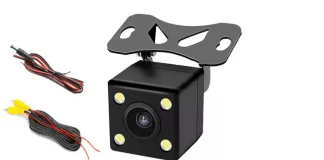As with all technology, Android headunits come with their terminology. Seemingly nonsensical at times, the descriptions of the Android headunits are regularly seen to confuse or mislead the buyer.
Our guide will help to shine a light on what it all means and help you through the Android headunit minefield.
Android car stereo
The descriptions below refer to a car headunit that runs Android, an ‘Android Head unit’. See also ‘What is an Android Head unit?’
- Android head unit
- Android car radio
- Android car stereo
- Best Android car stereo
- Chinese Android car player
- Double DIN Android Stereo
- Single DIN Android car stereo
Android API level
We have a post explaining the different Android API levels here. The API level is used to get a more realistic Android version of the head unit than just the familiar name used to advertise it. The post also shows how to find the API level in your Android headunit.
Android Auto
An app called Android Auto by Google. The app allows your phone to mirror its display on a different screen and is ideal for displaying minimal information to the driver—an uncluttered and driver-centric app screen.
Android Auto head unit
An Android auto head unit is a car stereo head unit incapable of running Android but can mirror a phone display. The Android auto head units can’t run Android apps and won’t connect to the play store. They rely on the phone to use apps. Typically the Android Auto app is installed on the phone, which is cast to the in-car dumb screen of the Android Auto head unit for displaying phone apps. This could be google maps, Waze, Spotify, or a launcher, but all these just run on the phone. If you don’t have your phone in the car, the Android head unit is very limited in what it can do.
Android Head Unit Launcher
The Android headunit launcher is the home screen of your Android. Typically a phone home screen may not give the best layout for driving, so alternatives are available. A launcher is just like any other app from the play store, with many choices and features. We have screenshots and reviews of some Android headunit launchers here. Be sure to check them out and try some for yourself.
Android versions
Android headunits run Android OS for the apps. Later headunits come with a later version of Android. Very poor and underpowered Android headunits may be restricted to an older version of Android to be able to run smoothly.
- KitKat, Android 4.4, very old and not seen in the wild now
- Marshmallow, Android 6 found in some very old Android headunits, was very popular but often faked.
- Oreo, Android 8,
- and 8.1 is a cut-down and limited version for slow or sub-budget phones; it has made its way to the subpar Android headunits, often faked.
- Pie is Android 9
- 10 was Android 10 when the naming moved from food to just a number
- 11 is Android 11.
APK
An APK is the file name extension of Android apps. You probably will never see the filename.apk, but if you do, you will probably see the How to sideload apps on an Android Headunit? Post as this deals with installing the .apk files.
APP
App is a program that runs on an Android headunit; all programs that run on Android are called ‘Apps’.
Boot Time
The Android Headunt boot-up time. The Android has to boot up fully before it can run any apps. The Android will boot each time it is switched on.
CAN BUS BOX
The CAN BUS BOX is optional, often included with the custom-fit Android headunit. The car computer can send information to the Android headunit directly over the CAN BUS.
What is the CAN BUS BOX with an Android Head Unit?
Coaxial digital output
Coax digital out is a system to connect an external amplifier to your Android headunit, and the digital signal is less affected by interference than an analog output. See also SPDIF digital out.
CVBS IN
CVBS IN 1 and 2, also known as the yellow RCA connector, is a composite video input. Further reading on CVBS in 1 can be found in our post. What is ‘CVBS in 1’ the yellow RCA for?
DIN
DIN is a standard size specification for Android headunit, car stereos, universal car radios, and storage spaces in the dashboard. Universal Android headunits are supplied in 1-DIN or 2-DIN universal fitting bodies. (although some modification may be required to get a perfect fit).
- 1 DIN is a shallow yet wide, rectangular shape body; the screen size varies.
- Single DIN is the same as 1 DIN
- 2 DIN is the size of two 1DIN stacked on top of each other for the body, while the screen size can be larger
- Double DIN is the same as 2DIN
- What is a Double DIN Android Head Unit?
DSP
A Digital Signal Processor. Either in software or a dedicated hardware chip to provide the DPS function. We have the ‘What is a DSP in an Android Headunit?’ topic to explain further.
FYT
FYT refers to the platform that the Android headunit is built on. The same platform can support several different but similar-generation processors/SoC. This information is only useful if you are into modding your Android headunit. Knowing your FYT from your MTC won’t be helpful to you in day-to-day use, and you may never know without any issues. FYT platforms usually have UIS7862 and SC9853i chips. See also the MTC platofrm.
FYT is linked to SYU and SQL as platforms.
GND
GND is a wire found during the installation of an Android headunit. GND is short for ‘Ground,’ meaning common ‘earth’ or 0V. We have a topic to help you with the GND connection, how to identify it, and where to connect it in our post: GND wire.
GPS
GPS is an acronym for Global Positioning System. GPS is the backbone behind Satellite Navigation (SatNav) on every Android head unit.
ISO
A standard set of universal connectors on an Android headunit makes fitting quicker and easier with universal adaptors and manufacturer-style plugs and sockets.
KEY1 KEY2 KEY-GND
Key1, Key2, and Key Gnd are wires used in installing Steering Wheel Controls, like volume and track forward. If you have a factory SWC or want an aftermarket SWC to control your Android headunit, see this post for an explanation of KEY1 and KEY2.
LRV
LRV is the Line – Rear View. The colored lines are superimposed over the backup camera display. Some cameras can generate the LRV, while some headunits can generate the LRV. When LRV is enabled on both the head unit and the camera, double LRV is produced and confuses the reversing image.
Manufacturers
Android headunits are often referred to by their manufacturer’s name. While the name may not manufacture the hardware, they may assemble, badge, or box the Android headunit. Manufacturers are not restricted to Android, so care has to be taken that the product is an Android and not an ‘Android auto’ or, worse, a Windows CE (WINCE) device.
- Joying head unit
- Seicane radio
- Dasaita head unit
- Hikty car stereo
- Camecho Android car radio
- Eincar universal double DIN
- Idoing head-unit
- Podofo 7 inch Android 2 Din
- JOYX 10.1
- Pumpkin 2 DIN
- Auto pumpkin Android
- Belsee
MG1613S
MG1613S is a highly sensitive single-chip GPS satellite signal reception and processing solution. DGPS & SBAS (WAAS/EGNOS/MSAS) compatible. Found in many Android headunits.
MTC
MTC refers to the platform that the Android headunit is built on. The MTC platform can be fitted with several different but similar-generation processors. Knowing the platform won’t help you in the day-to-day use of the Android Headunit. The MTC platform is of particular interest to modders, people who wish to change the firmware in the Android headunit. MTC platform-based Android headunits typically came with the RockChip processors; PX3, PX30, PX5, or PX6.
Subsets of the MTC platform naming are MTCB, MTCC, and MTCD. See What MTC is my Headunit?
Not all Android headunits are MTC based; many of them are not.
See also the FYT platform.
NXP6686
NXP6686 is the name of an AM/FM radio chip built into an Android headunit similar to NXP6851 for the same functions. The chips are automotive grade and designed for use in a vehicle.
OS
OS is the Operating System. In an Android headunit, the OS is Android. An Android headunit can also be known as an Android OS car stereo, and this is because the car stereo runs the Android Operating System (OS).
Processor
The microprocessor (SoC) is the powerhouse of the Android Headunit, making your phone quick or slow and your laptop fast or slow. The Processor is the CPU, and faster is always better, as heat and battery life are less important for an Android headunit.
- 8227L – Mediatek 8227L is a popular chip that many subsequent generations of faster and more capable CPUs have surpassed. The name 8227L has become synonymous with junk.
- Quad-core is 4 cores in a processor, it may or may not be the 8227L, but it is not very many.
- Hexa-Core – 6 cores in a processor, modern headunit processors have 6 cores; the PX6 is a popular Hexacore processor.
- Octa-Core 8 Cores in a Processor, a modern processor has 8 cores; the PX5 is a popular octa-core processor.
- PX5 processor – an Octa-Core processor found in previous generation headunits now superseded by the PX6
- PX6 processor has 6 cores, found in current headunits, and runs quickly
- UIS7862 is a current high-speed processor found in the latest headunits
QuadCore
Quad-Core is an Android headunit processor with only four processing cores.
An explanation of the QuadCore – Android head unit processors is here.
RAM
RAM is listed in Gigabytes (Gb) and is a major factor in the head unit performance.
- 1Gb is very low and not usable by modern Android versions that run modern apps.
- 2Gb is poor by modern standards
- 4Gb is an acceptable modern RAM for current Android and apps
- 6Gb is currently the maximum good and will give the best experience when switching between multiple heavy apps and good future-proofing.
- 8Gb is seen in the latest specifications and moves a long way towards future-proofing your Android head unit.
Read our Android Headunit RAM article.
Recovery Mode
Android Headunit recovery mode is a secret menu allowing high-level Android file changes. Use for fixing boot loops and some Android boot failures—a diagnostic feature not often needed by the end user.
ROM
ROM is listed in Gigabytes (Gb) but has little impact on headunit performance; it is used to store apps, maps, and files.
- 16Gb is often found in very old specification headunits
- 32Gb is acceptable but often linked to old and substandard specifications
- 64Gb is more aligned to modern standards, but having more doesn’t have much impact on the speed or use of the Android headunit
- 128Gb is available as an Android headunit ROM specification.
- 256Gb is found in the latest and is more of a headline to sell the latest. There is no performance difference between 16Gb, 32Gb, 64Gb, or even 128Gb.
Read our Android Headunit ROM article.
ROOT
Root on an Android headunit is a software modification that allows some apps to run at a higher privilege level than normally on a non-rooted system. The root is a security concern because it bypasses security permission. But can give apps greater access to the hardware for enhanced features that would not normally be available. Your Android may or may not already be rooted, and the way to find out if the root-required app will work is to try it.
Sideload
Sideloading is for installing apps that are not obtained from the play store. This is a security concern to uninstall unchecked or untrusted apps, but it can bring you apps not normally available to your Android headunit. See our How to sideload apps on an Android Headunit? Post for instructions.
SPDIF digital output
S/PDIF is an optical output from the Android headunit to a suitably equipped S/PDIF amplifier. The advantage of S/PDIF is to carry the signal to an amplifier and the ultimate high rejection of interference on the link. SPDIF digital out is only relevant if you connect to an external device like an amplifier with a S/PDIF connection.
TDA7851
TDA7851 is a discrete IC amplifier in an Android headunit stereo. The 7851 can run 4 speakers of 48 Watts into 4 Ω Max, and there are MOSFET outputs—a typical Class AB amplifier chip for in-vehicle use.
Tesla Android Headunit
‘Tesla’ refers to the portrait-style orientation of the Android screen. If you have not seen the inside of one of Elon Musks Tesla cars, then think of the portrait orientation as the same as holding your phone. This is portrait mode, commonly known as ‘Tesla style‘ for an Android headunit.
Most Android headunits are fixed in landscape mode, the screen’s orientation having its longest edges at the top and bottom. Like how you would hold your phone to watch a movie, the Tesla style turns this on its head to resemble a phone.
Some Tesla-style Android headunits can rotate the screen between portrait and landscape, just as you would with your phone, to suit your viewing content. The universal style Tesla radios often have the rotate feature, whereas the custom fit tends to be fixed in position in true portrait Tesla style.
TPMS
TPMS on an Android headunit is the Tyre Pressure Monitoring System. A sensor attached to each tire valve can send a signal to a receiver located in the vehicle. The receiver is linked to the Android headunit – by USB. The TPMS app can warn of under-inflation or display tire pressures on the screen.
5GHz
We have an article describing 5GHz for an Android headunit here, including advice about its features and a comparison with 2.4GHz.







